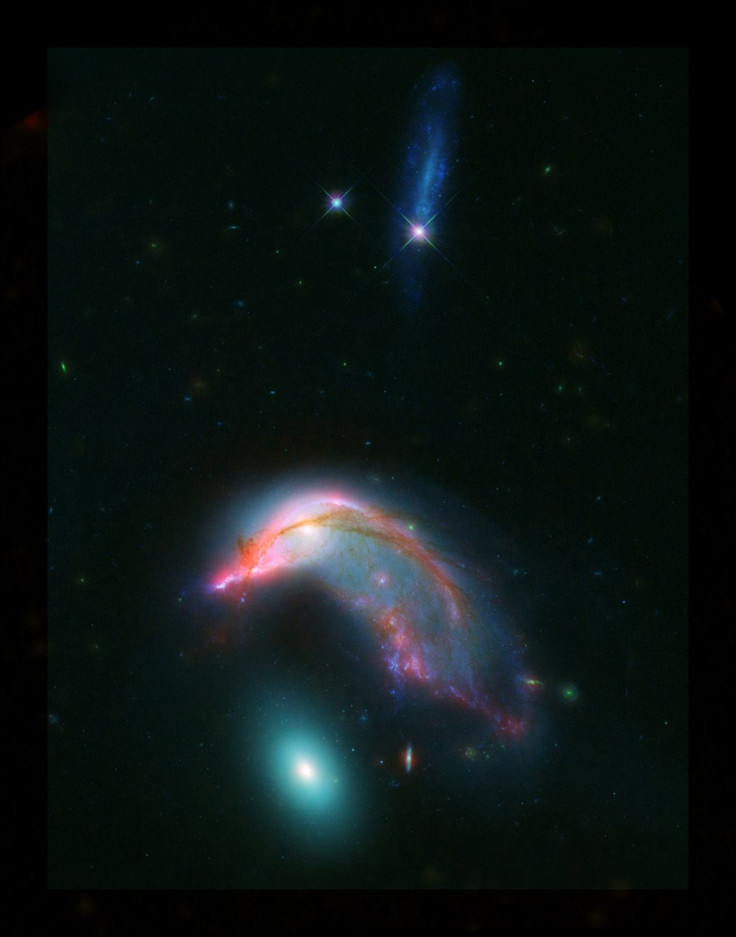Stunning Image Of Ongoing Galaxy Collision Resembles A Penguin Protecting Its Egg

KEY POINTS
- NASA shared an image of two galaxies about to merge
- Arp 142 resembles a cosmic penguin protecting its egg
- Strong gravitational interactions will cause ARP 142's galaxies to collide
NASA shared a stunning photo of galaxies in space that look like a penguin that was protecting its egg. According to the agency, the galaxies featured in the photo are actually on the verge of colliding with one another.
The image taken by NASA, which was taken by the Hubble Space Telescope, features two interacting galaxies that are collectively known as Arp 142. It is situated in the constellation Hydra and lies about 352 million light-years from Earth, which is 10 times farther than the Andromeda galaxy, Earth’s nearest big galactic neighbor.
Within Arp 142 are two different galaxies. The larger one with an odd shape is known as NGC 2936, while the smaller one with a bluish color is called NGC 2937. According to NASA, NGC 2936 used to look like a standard spiral galaxy. However, due to the intense gravitational pull of its neighbor, its shape became distorted, causing it to look like a cosmic penguin in space.
NGC 2937, on the other hand, is filled with old stars, which provide the galaxy with its bright glow. Like NGC 2936, NGC 2937’s gravitational interaction with its neighbor is also distorting its shape. However, due to the number of stars scattered across this galaxy, these distortions are not directly visible.
As noted by NASA, the gravitational pull between these two galaxies will eventually result in a massive galactic collision. Once this happens, NGC 2937 and NGC 2936 will merge with one another. Since the egg-looking NGC 2937 appears to be more densely packed and filled with stars, some of these stellar objects could get thrown out during the collision.
NASA explained that as the two galaxies merge, their contents, mainly composed of dust and stars, will interact with one another. The agency noted that the merger could serve as a significant event in the universe, just like how Milky Way was formed.
“Eventually these two galaxies will merge to form a single object, with their two populations of stars, gas and dust intermingling,” NASA explained in a statement. “This kind of merger was likely a significant step in the history of most large galaxies we see around us in the nearby universe, including our own Milky Way.”
© Copyright IBTimes 2025. All rights reserved.





















